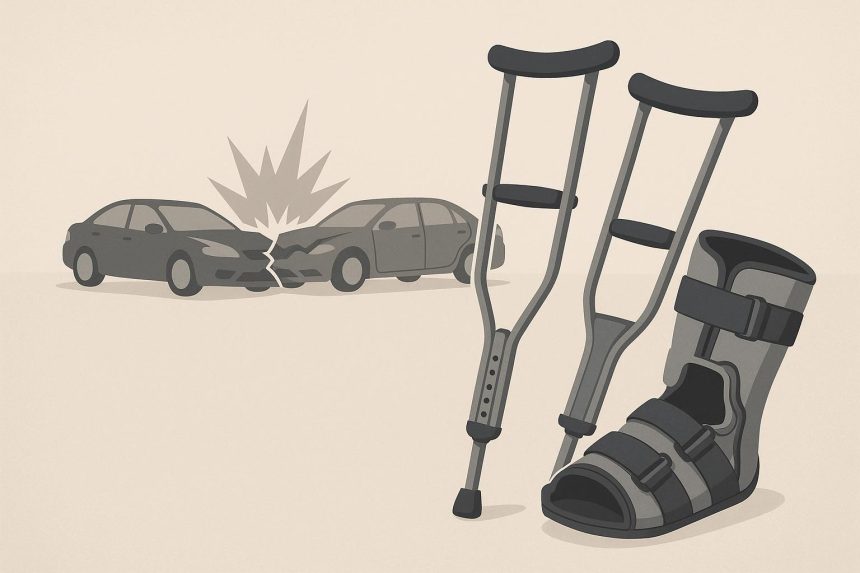Car accidents in Long Beach are unfortunately common, with the city experiencing thousands of traffic incidents annually due to its busy ports, extensive freeway system, and dense urban traffic. According to the California Office of Traffic Safety, Los Angeles County, which includes Long Beach, consistently ranks among the highest in the state for traffic-related injuries and fatalities. These accidents can cause life-changing injuries that can last a lifetime, requiring major changes in life and a tactical approach to healing and recovery.
For those affected, knowing how to deal with such things is important, and seeking guidance from a qualified Long Beach car accident lawyer can provide crucial support in navigating both the legal and recovery aspects of your situation. In this post, we look into the steps you could take to deal with long-term injuries caused by car accidents.
Acknowledging the Impact
Step one is realizing the strain of an accident, both physically and emotionally. Injuries can vary from minor chronic discomfort to mobility problems that prevent you from leading a normal life. Along with the physical restrictions, emotional stress can also be quite large, as frustration or anxiety will often come along. Recognizing these impacts is essential so they can be addressed appropriately.
Seeking Medical Guidance
Consulting healthcare professionals is essential. Regular check-ups and adhering to suggested treatment plans advance healing. They can offer guidance for pain management, recommend rehabilitation exercises, and advise on lifestyle adjustments. Doctors need to be kept in the loop to modify treatment as necessary.
Embracing Physical Therapy
When it comes to getting back on track to regaining your strength and flexibility, physical therapy is essential. Patients are taken through different exercises by therapists to suit their conditions. According to the American Physical Therapy Association, structured rehabilitation programs can significantly improve long-term outcomes for accident victims. It may take some time, but you can improve significantly, and you have to be persistent. Going to sessions consistently and practicing exercises at home will lead to better recovery results.
Adapting Daily Activities
This means changing things up day to day. Sometimes, something as simple as a mobility aid or a bit of alteration of a workspace can make a world of difference. These adaptations help to ensure continued independence and added comfort. Occupational therapists can help come up with more tips for how to manage day-to-day life.
Prioritizing Mental Well-being
The emotional health aspect of this journey is just as important as the physical recovery component. Relax through activities you enjoy—this may include activities that help reduce stress. Reaching out to support groups or counselors provides a sense of community and understanding. If you are someone who is going through similar struggles, it can certainly help to share experiences with other people going through the same challenges.
Exploring Legal Options
There are times you may want legal help. Knowledge about rights and compensation relief can ease the financial burden. The process might seem daunting, but talking to lawyers can make the way forward clearer and show what may be possible. Taking this step can provide some reassurance and allow people to focus on the healing process.
Building a Support Network
Recovery is also a matter of family and friends. You can strengthen these relationships by accepting help and communicating your needs. Having support from friends and family to help you along the way makes the journey much easier. Having a strong support system provides emotional and practical assistance, which can make recovery go more smoothly.
Setting Realistic Goals
Setting achievable goals also motivates you. You can track progress and celebrate milestones by setting goals over the short and long term. Keep these targets realistic—within physical and mental limits. Changing goals in accordance with the healing process ensures that the process stays fresh and keeps you motivated.
Embracing Patience and Persistence
Recovery often takes a long period of time for long-term injuries. It takes time and hard work to get through the setbacks and the slow progress. Celebrating small wins and looking at things optimistically can help make the whole process less daunting. Understanding that healing is a process that takes time provides a reassuring context for your journey.
Conclusion
Managing your long-term care after a car accident takes considerable effort. Physical recovery, emotional support, and practical adjustments all play important parts in the healing process. With the recognition of the physical and emotional toll of injuries, the importance of proper medical evaluation and legal representation, and the support of friends and loved ones, the process of overcoming such adversity can be made easier. The challenges faced may be significant, but with patience, persistence, and emphasis on achievable goals, many rewarding years can follow in a life that is well-adapted to new circumstances.
Lynn Martelli is an editor at Readability. She received her MFA in Creative Writing from Antioch University and has worked as an editor for over 10 years. Lynn has edited a wide variety of books, including fiction, non-fiction, memoirs, and more. In her free time, Lynn enjoys reading, writing, and spending time with her family and friends.















